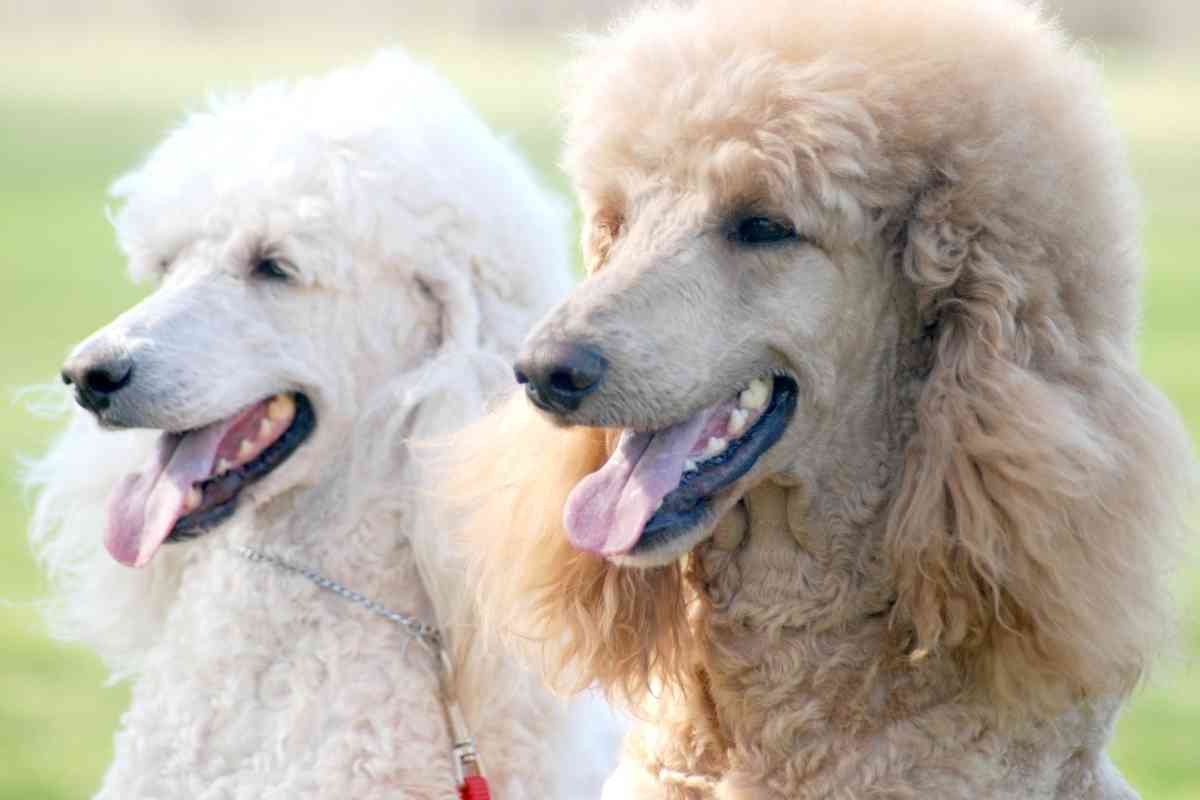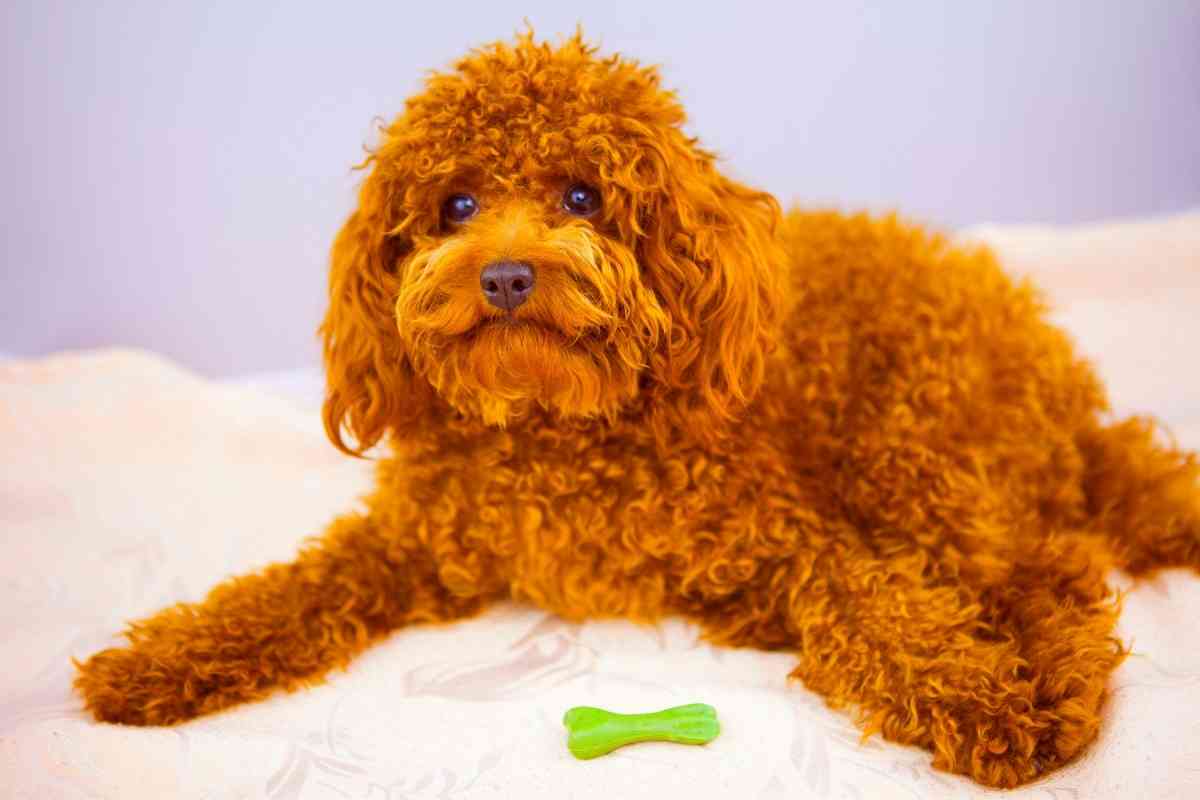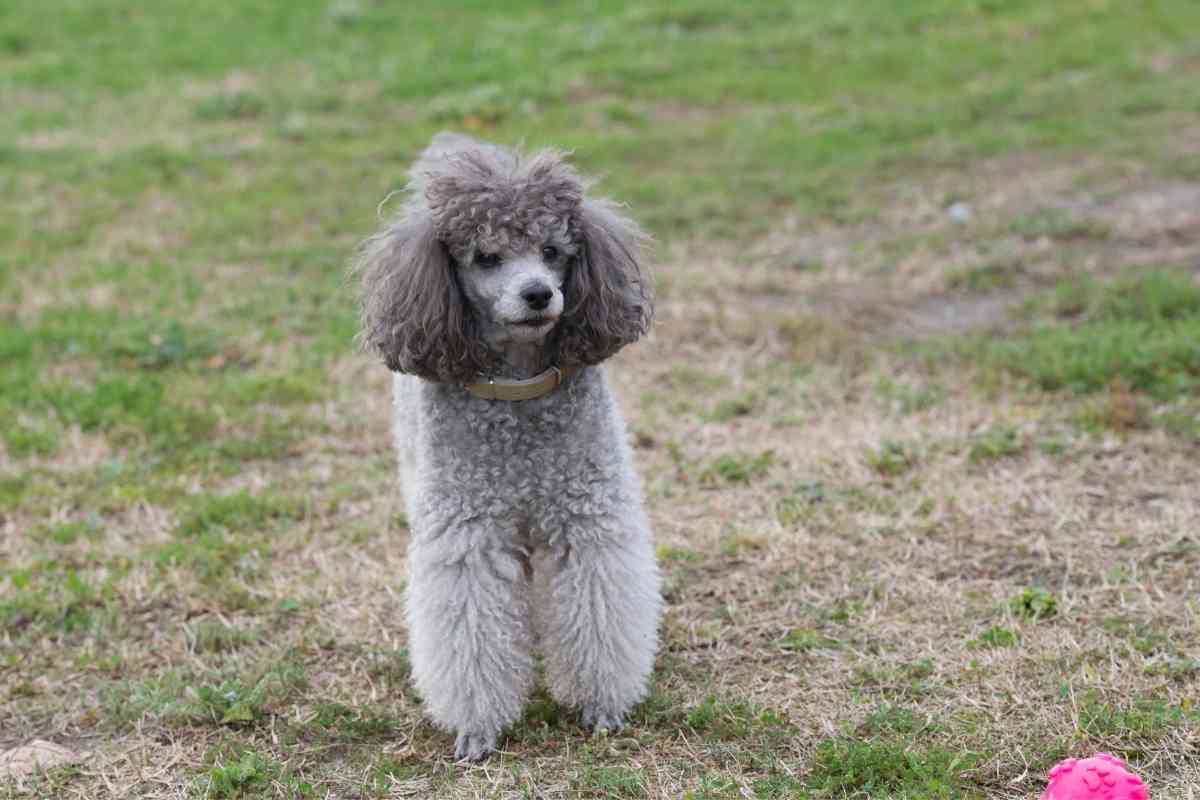What Color Will My Poodle Puppies Be? 11 Solid Color Patterns
Poodles are some of the most common dogs in many homes today. Folks love this dog because it has a good temperament and is quite intelligent. There are many different colors available when it comes to Poodles. When you have a favorite color in mind, it’s not uncommon to wonder which you’ll get. But what color will my Poodle puppies be?

What Color Will My Poodle Puppies Be?
Poodle puppies can be black, brown, or light-colored at birth. The main way to know what color your Poodle puppy will be is to check the parents. Often, breeding purebreds is the best way to predict a puppy’s color before birth.
The American Kennel Club (AKC) recognizes 11 solid Poodle colors. These are the ones that can participate in ring competitions. Usually, a trustworthy breeder will have clear records of the Poodles to help identify the parents and potential puppy color.
However, there can be color variations, especially when the Poodle parents aren’t purebred. Keep this in mind as you plan to get a Poodle puppy.
How Do I Tell What Color My Poodle Puppy Will Be?
When you want a Poodle puppy, it’s not uncommon to wonder about its color. Note that Poodles come in a variety of colors. These are solid base colors: blue, red, black, brown, apricot, silver, cream, and silver beige.
Silver, blue, and silver beige Poodle puppies are part of the pure Poodle gene. Unlike in other dog species, these color combinations aren’t due to gene dilution. The cause is a graying gene that will make the coat color clearer as the puppy grows.
Most Poodle puppies are born black or brown. However, at 6 weeks, it’s easier to identify the silver and silver beige puppies. Check the muzzle of the Poodle puppy when shaving, and you’ll notice it’s getting lighter.
However, it’s not easy to identify the blue Poodle puppies. Give it time since Poodle coats can take up to 3 years to clear. As for apricot, red, and cream puppies, the main cause of these colors is a red recessive gene.
Such puppies have a genotype e/e, meaning they’re homozygous for the recessive red gene. This happens on the E-locus, but it won’t be easy to know your Poodle puppy’s shade of red when it becomes an adult.
What is White Spotting?
It’s not uncommon to come across white markings on your Poodles. White spotting means several white hairs appear on puppy chests. This is a result of the pie-bald gene, also known as parti.
There’s no chance of a dog carrying a copy of this S/S gene, S/s (one copy) or S/S (two copies). If your puppy doesn’t carry the parti gene, it won’t have any white markings on its coat. It’s common for white hairs to appear on the chest or toe of the Poodle puppy

11 Common Types of Solid Poodle Colors
There’s a wide variety of Poodle colors worth noting. Get to know all the most common colors available as you prepare to add a new Poodle puppy.
1. Blue
At birth, blue Poodles are black. Therefore, it’s common to find black as the main color on a puppy’s registration forms.
As the puppy grows, its hue starts to change to blue from black, which can take up to 12 months. For some, the duration is longer, and you won’t have a solid blue hue until the Poodle is 2 years old.
But, if you want to distinguish between a blue and black Poodle, check your puppy’s coat for a tinge of brown. Blue Poodles also have some hint of silver or white on their paws between the pads as puppies.
2. Black
Black Poodles remain one of the most popular hues available. Such dogs have a solid black hue all over their body, including on the nose, eye rims, lips, toenails, and eyes.
There’s no tinting on the black coat of a black Poodle puppy. Apart from tinting, you won’t see silver or white hairs anywhere on the Poodle puppy’s body. Though the dark color can fade with age, your dog remains a solid black.
3. Gray
Age can cause Poodle coats to turn gray because of the progressive graying gene. Such Poodles are born black, brown, or blue. Check the parents for any sign of gray, and you can foretell the color of the puppy in years to come.
Some Poodle puppies are born gray. This will remain their color throughout. But there are some gray Poodle puppies whose hue begins to change after 3 months. Your puppy experiences more fading with age.
4. Silver
A silver Poodle is born black. This solid color begins to lighten quite early in the puppy’s life. At 6 weeks, you can notice silver all over the paws and face of the Poodle puppy. Within 12 months, the whole coat is silver.
At birth, silver Poodles have some white on the underpads. The rest of the coat is black, but only for a limited duration. The only way to get a silver Poodle is if the mom and dad are purebred silver Poodles.
5. White
White remains the most sought-after and popular Poodle hue of all time. While the coat of this Poodle is white, it’s in the same family as the black Poodle. This is why you see a white Poodle with dark eyes, a black nose, nails, and skin.
Note that a white Poodle isn’t the same as an albino. Albino Poodles tend to have pink skin.
6. Cream
One of the most challenging color variations to distinguish in Poodles is cream. This comes as a result of different white variations on a dog. But, you can pinpoint a cream Poodle through its black-colored nose.
Cream Poodles are always born light-colored. They can even be medium brown, and the colors fade more as the puppy ages.

7. Red
Red Poodles are beautiful and often have copper, chestnut, and auburn hues. Up until 1980, red Poodles were in the same category as brown. However, that has since changed, and now they belong to their category during competition.
The Rufus gene is responsible for the darker red Poodle hue. Rufus isn’t common as a recessive gene, which is why it’s rare to come across red Poodles.
8. Brown
Have you ever come across a Poodle that’s walnut brown or dark mahogany? Well, that’s a brown Poodle. There are many hues that you can come across when researching brown Poodles.
These Poodles are born dark, and their color begins to fade as the puppy grows up. Often, a brown Poodle will have pale yellow or green eyes. Many show rings don’t like this coloring, but it’s not easy to eliminate it from these Poodles.
9. Café Au Lait
The Café Au Lait Poodle has a light tan tinge on the coat. The eyes are amber, and the nose is liver brown. Though the Café Au Lait tends to look similar to the red Poodles, there’s a difference. Instead, such Poodles look more like silver Poodles.
10. Apricot
Apricot is one of the most recently accepted Poodle colors. Before, it fell into the red category before the AKC added it to the list of standard solid Poodle colors.
While relatively new in show rings, the apricot Poodle is becoming popular. It’s a winning show Poodle that many competitors are adding to their homes.
11. Silver Beige
All silver beige Poodles look more like a diluted brown. These Poodles are born brown and start to show signs of fading early. At 6 weeks, you can notice fading around the paws and face.